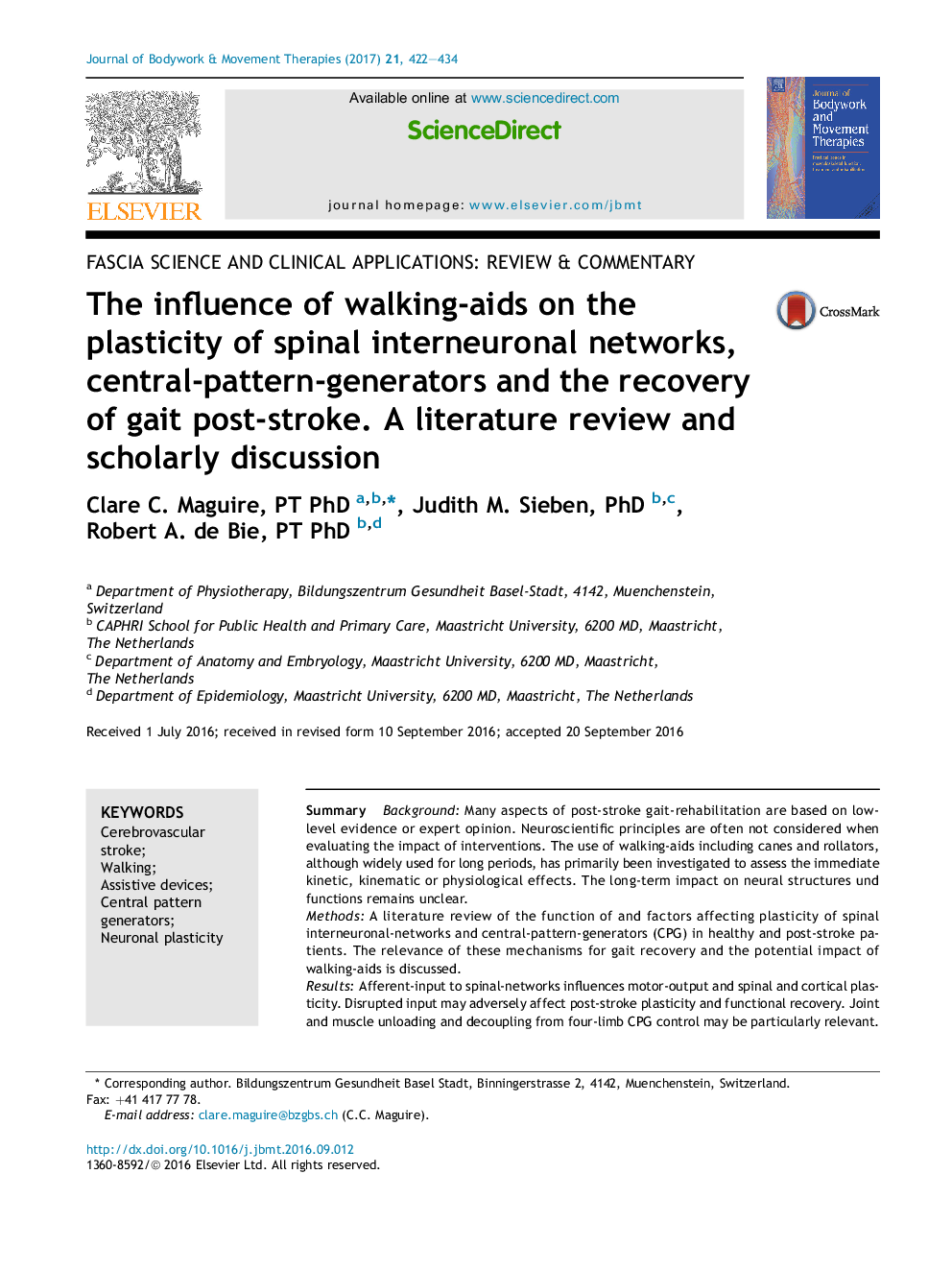| کد مقاله | کد نشریه | سال انتشار | مقاله انگلیسی | نسخه تمام متن |
|---|---|---|---|---|
| 5564076 | 1403496 | 2017 | 13 صفحه PDF | دانلود رایگان |
SummaryBackgroundMany aspects of post-stroke gait-rehabilitation are based on low-level evidence or expert opinion. Neuroscientific principles are often not considered when evaluating the impact of interventions. The use of walking-aids including canes and rollators, although widely used for long periods, has primarily been investigated to assess the immediate kinetic, kinematic or physiological effects. The long-term impact on neural structures und functions remains unclear.MethodsA literature review of the function of and factors affecting plasticity of spinal interneuronal-networks and central-pattern-generators (CPG) in healthy and post-stroke patients. The relevance of these mechanisms for gait recovery and the potential impact of walking-aids is discussed.ResultsAfferent-input to spinal-networks influences motor-output and spinal and cortical plasticity. Disrupted input may adversely affect post-stroke plasticity and functional recovery. Joint and muscle unloading and decoupling from four-limb CPG control may be particularly relevant.ConclusionsCanes and rollators disrupt afferent-input and may negatively affect the recovery of gait.
Journal: Journal of Bodywork and Movement Therapies - Volume 21, Issue 2, April 2017, Pages 422-434
